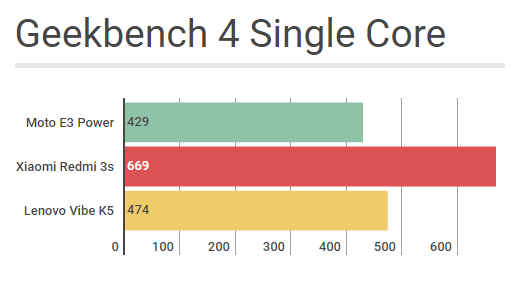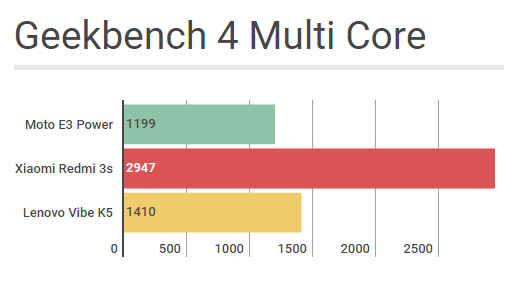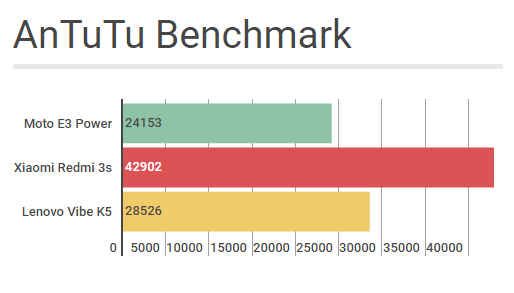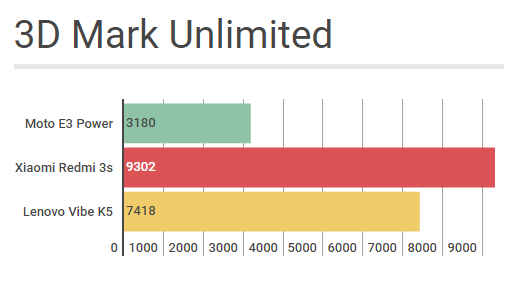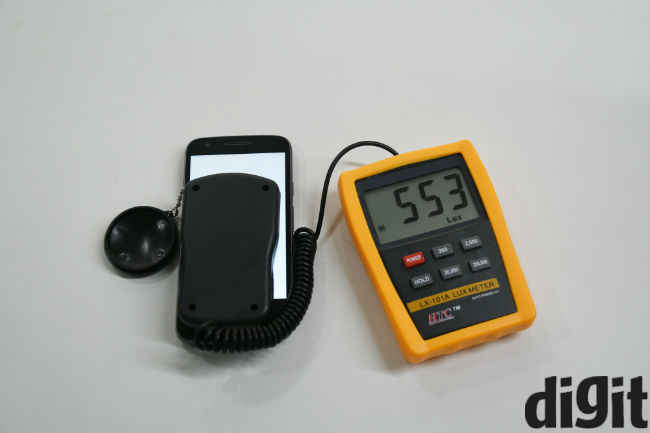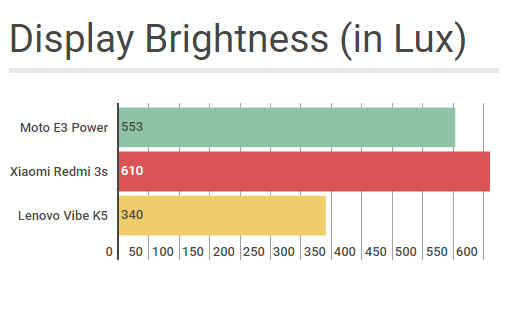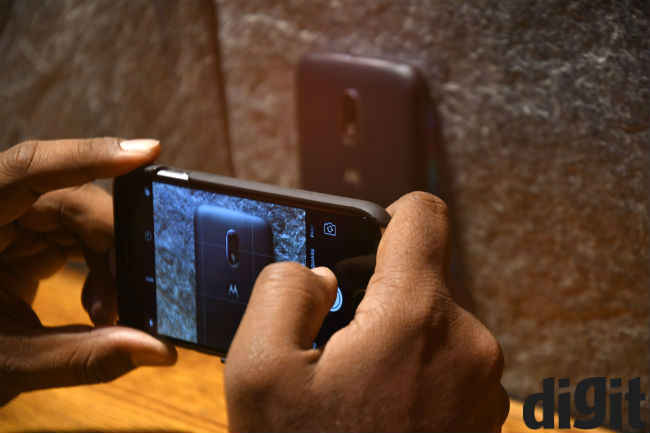Moto E3 Power: Initial Tests, Performance Comparison and Camera Samples
The Moto E3 Power is Motorola's newest smartphone in the budget segment, but will its promise of experience over specifications hold this time?
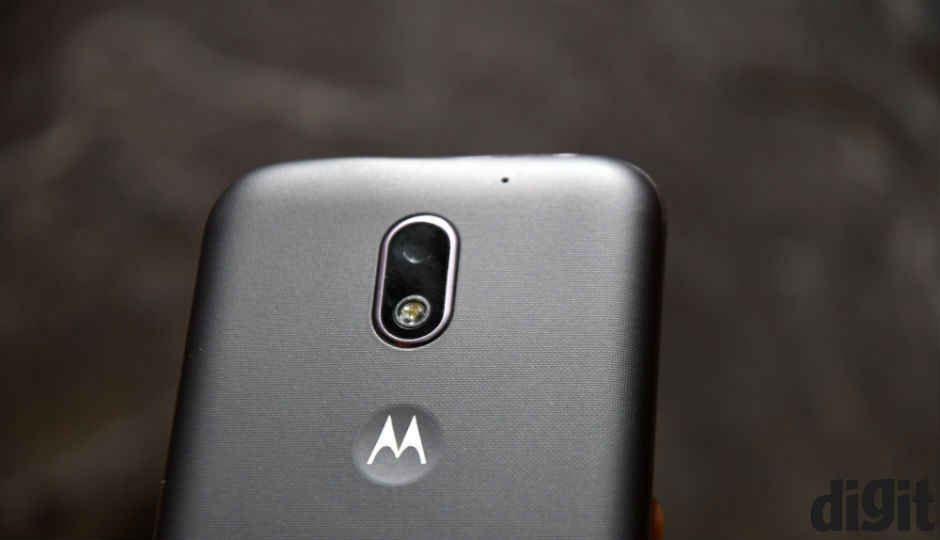
Motorola’s promise has always been to provide top-class user experience on its smartphones. The company has routinely ignored the specs race, arguing that its phones don’t need the newest specifications to match competitors. And for the most part, Motorola has succeeded in maintaining that promise. But the smartphone market today is at a different level, and it’s becoming tougher and tougher to justify Motorola’s ignorance of the newest specs.
 Survey
SurveyAt Rs. 7,999, the Moto E3 Power competes against the Xiaomi Redmi 3s and the Lenovo Vibe K5. All three devices have 2GB of RAM, but the Mi and Lenovo devices run on Qualcomm SoCs (Snapdragon 430 and 415 respectively). Motorola, however, has chosen the MediaTek MT6735P SoC. On paper, the Snapdragon 430 and MT6735P both have Cortex A53 cores, clocked at 1GHz on the Moto E3 Power and 1.4GHz on the Redmi 3s. The Lenovo Vibe K5, on the other hand, has two quad-core Cortex A53 clusters, clocked at 1.5GHz and 1.2GHz.
So, does the Moto E3 Power live up to the promise of good user experience? We performed some of our initial tests on the device to determine the same.
Performance
As with any Motorola smartphone, stock Android is what you get on this device. However, Motorola’s implementation of Android seems far removed from what the Lenovo Vibe K5 and Xiaomi Redmi 3s offer. The Moto E shows visible stutters and lags when you launch the camera, run a heavy game, or press the home button to come out of a heavy game. There’s a certain sluggishness about the phone, which we don’t really like.
The real world performance of the Moto E3 Power is reflected in benchmarks as well
To be clear, such performance from a phone in this price range would have been acceptable last year. However, in relation to competition, we can’t say that the Moto E3 Power really makes the mark. This isn’t the experience that users should get when there are better options available out there.
The Moto E3 Power is much weaker on graphics performance, compared to both the Redmi 3s and Vibe K5
In general, the Xiaomi Redmi 3s is about 70% more powerful than the Moto E3 Power in graphics related tasks, and it is 35% faster on the single-core Geekbench 4 test. You also get nearly 60% faster results on multi-core tests, from the Snapdragon 430-powered Redmi 3s.
The Moto E3 Power is much closer to the Lenovo Vibe K5, though. The two generate similar results on benchmarks, and the real world performance also seems more or less similar. Keeping the Redmi 3s as the benchmark, you can see similar differences when comparing side-by-side against the Moto E3 Power and Lenovo Vibe K5.
It is also worth noting that you can't record video over HD resolution on the Moto E3 Power. This, again, is a minor compromise in this budget, but one wonders whether the user experience would have been better with FHD recording, which is available in the Redmi 3s and Lenovo Vibe K5.
Build and Design
Motorola may have used a plastic casing for the Moto E3 Power, but we really don’t penalise the phone for the same. At this price, the Moto E3 Power’s matte-ish plastic back differentiates itself from the crowd. The Redmi 3s and Lenovo Vibe K5 feel similar when you hold them, whereas the Moto E3 Power has a personality of its own. Plus, the fact that it has a removable back and battery would be appreciated by many.
Removable back. Yay!
However, we wish Motorola could have put slimmer bezels on this one. For a 5-inch device, the E3 is too big. It’s not quite ergonomic, and while you can use it with one hand, you will have to shift your grip around.
Display
Sticking with the theme of experience over raw specs, the Moto E3 Power has a 5-inch HD display. Here though, the Moto E3 Power is considerably ahead of the Lenovo Vibe K5 in terms of brightness. The latter scores 553 Lux compared to the Vibe K5’s maximum brightness of 340 Lux. However, the Redmi 3s against comes out ahead, with a brightness rating of 610 Lux.
The maximum brightness of the Moto E3 Power is 553 Lux
Testing the colours and contrast on the display, the Redmi 3s again comes out in front, however, we prefer the Moto E3 Power’s display to the Vibe K5, due to better viewing angles. 720p resolution can still be forgiven at this price, but we don’t like the yellowish tint on the Vibe K5’s display, when viewed from an angle.
Having said that, the Moto E3 Power’s display does seem slightly reflective, which would affect the device’s sunlight visibility.
Camera
If you’re using earlier generations of the Moto E, then the Moto E3 Power’s 8MP camera is a huge improvement. However, this is still a pretty weak camera by current standards. Images look passably nice on the phone’s own screen, but put them on a calibrated display, and you see definite issues. It’s acceptable at the budget price, but if you are looking for the best camera, we would once again have to choose the Redmi 3s over this one.
The camera is much improved from earlier Moto E smartphones
We will have a more detailed analysis of the Moto E3 Power’s camera in the review. For now, here’s a gallery of sample photos taken by the device.
Bottomline
From the initial tests, it doesn't seem like the Moto E3 Power will really be the best choice at this price. Motorola usually has a huge advantage in the fact that it uses the newest Android version. However, both the Redmi 3s also runs on Android Marshmallow. In addition, the MediaTek processor makes us question whether the Moto E3 Power will receive the Android Nougat update as well, but only time shall tell.
